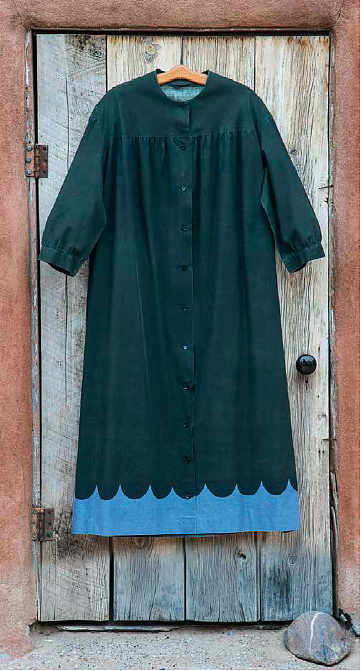Jane Jacobs, Georgia O'Keeffe, and the Power of the Marimekko Dress

Marimekko "Varjo" dress owned by Georgia O'Keeffe, c. 1963. Designed by Annika Rimala. Courtesy Brooklyn Museum.
On June 20, 1966, Jane Jacobs was speaking out against the destruction of Washington Square Park. “SOS, Park Association of New York City Opposes N.Y.U. Library!” reads the sign taped to the table. And another: “N.Y.U. Don’t block off the … ” The signs overlap. The light? The street? The park? All of the above.
Jacobs was protesting New York University’s plans to build a library on the south side of Washington Square, a great red hulk that she and fellow-protesters feared would turn the public park into an academic green and loom over low-rise row houses. “All the glamour of Philip Johnson [the project’s architect] won’t save that corner of the park from gloom,” she said. “The two elements most destructive of urban parks are highways and educational institutions.” She’d already stopped Robert Moses’s proposed throughway a decade before; now she was trying to take care of the second element.
Peering at a blotchy black-and-white image of this historic event, I noticed something distinctive about the hem of Jacobs’s dress: a lighter-colored scallop wending its way around the bottom, like the brick border on a garden plot. The Jane Jacobs look was simple to the point of caricature: blunt bob with bangs, thick black eyeglass frames, beads. A skirt fit for cycling around Manhattan. Where had I seen that border before? Then it came to me: at the Brooklyn Museum’s current exhibition “Georgia O’Keeffe: Living Modern,” a deeper-than-you-might-think look at the painter’s curation of her wardrobe, home, and image. Against one wall, the curator Wanda M. Corn lines up a series of O’Keeffe’s long-sleeved, full-skirted cotton dresses from a Finnish company that epitomized modern fashion: Marimekko. O’Keeffe and Jacobs had (almost) the same dress.
On X
Follow @LangeAlexandraOn Instagram
Featured articles
CityLab
New York Times
New Angle: Voice
Getting Curious with Jonathan Van Ness